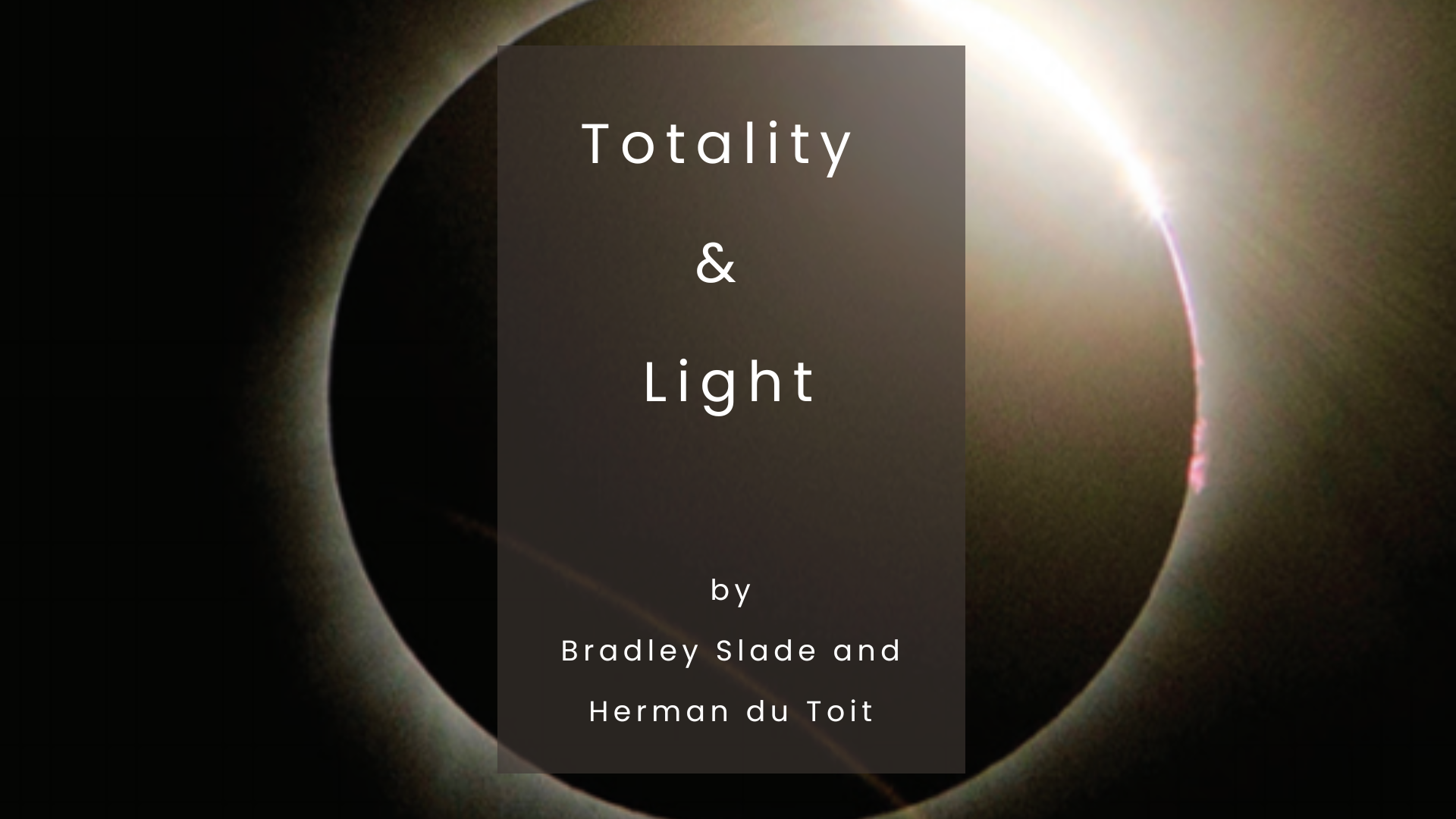Articles/Essays – Volume 53, No. 2
Totality & Light
Totality
Bradley Slade
We climbed to the ridgeline atop the cliffs. With the rest of the crowd we laid out blankets, and I set up a camera. The moon slowly started to move in front of the sun. We could only see this with eclipse glasses that filtered away nearly all the sun’s light.
The light slowly dimmed, and everything took on a strange aspect. The sliver of light disappeared, and the eclipse reached totality. The sky went dark except for what looked like sunset ringing the horizon all the way around. The sun was so beautiful, the ring of fire and bottomless black disk of the moon in the center. 1+1=1.
I was surprised by the emotions I felt. I was gasping for breath as though plunged in ice water, laughing and sobbing with tears streaming down my face. Others said they felt the same. There was a cacophony of laughter and crying and howling. It was absolutely transforming, like going deep within a primal place, many layers deep.
When the first flash of light blinked on afterward. it was the cleanest, purest light I’ve ever seen. There are no words for this.
My son had seized on the word “transfigure” and we all found it so. It reminded me of a spiritual experience: a highly emotional state accompanied the eclipse, but the emotions weren’t the eclipse. It is easy to take emotion as a spiritual experience, but the spirit is light and clarity and revelation that can trigger profound emotion, like a siren or marching band does.
Light
Herman du Toit
Ever since Plato described shadows on the walls of the allegorical cave, light has been a metaphor for truth and enlightenment. Heaven has always been associated with light and hell with darkness. The word “education” is rooted in the Latin word educere, which means to lead forth. As an educator I have always believed this to mean to lead forth out of darkness and ignorance into the light of truth and understanding. Light is a universal metaphor for intellectual apprehension and for revealing aesthetic and spiritual truth. It could even be considered the common language, or lingua franca, of all major religions.
For me, the incidence of light and shade is what reveals the graphic qualities of an image. Light draws out the essence of natural phenomena—be it a transcendent sunset, the pristine beauty of a white lily, or a gnarled olive tree in the Garden of Gethsemane, weighed down by the dark mass of its oppressive foliage.
It is for this reason that I like the expressive and tactile qualities of hand-pulled photogravure prints and charcoal drawings, with their velvety blacks and pure whites. They not only establish the essential nature of things but act as a metaphor for the ever-present powers of light and darkness in our lives and in the world around us.


 Back to full Issue
Back to full Issue

